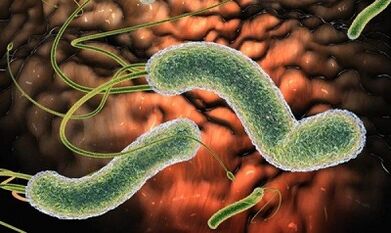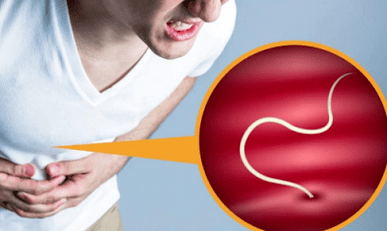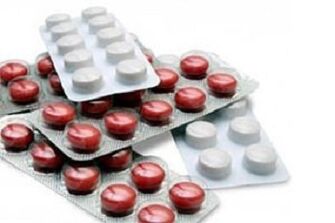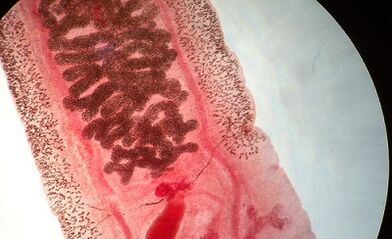
Among patients serious misconception is that Helminthi live only in the intestines.However, it cannot be denied the fact that parasites in human blood are widely broad as well as other types of helminthias.Identification and timely therapy of such pathological conditions require special attention, because when entering the bloodstream, a small socket can hit absolutely any organ.
Symptoms and painful sensations that cause blood in blood in humans can be different and in the manifestations and degrees of their severity.It is important to start treatment in a timely manner and prevent further expansion of the parasites on the human body in order to prevent complex consequences in a timely manner.It is initially necessary to learn how worms appear in the blood.
The types of parasites place the bloodstream
Nothing is so complicated by producing the correct differential diagnosis as a huge spread of symptoms that are manifested in patients with blood parasites.Different types of helminths cause different signs.In the event of a worm infection with blood vessels, the patient needs a complete medical examination to help identify the type of parasites and determine adequate treatment of the pathological situation.
There are several parasites that can live in human blood:
- Babesia;
- Malaria plasmodium;
- Trinosoma;
- Ankilostoma;
- Trichinella;
- toxoplasma;
- Toxocar.
Most Helmintha enter the human body after insect bites.Such parasites of the circulation channel are the most dangerous for children.They affect proper organ development, the growth of the entire organism and state of the immune system.Many people can live with parasites for years, not doubt they are infected.
General symptoms of parasitic blood poisoning
Each individual type of parasite in human blood has symptoms that are characteristic only for this disease.
However, there are a string of signs characteristic of any type of helminthose:
- Weakness;
- Dizziness, headache;
- Nausea, vomiting;
- It is possible to increase total body temperature;
- Hurts in the limbs and all body;
- There are possible attacks of loss of consciousness.
All these symptoms are the main manifestations of increased content of poisonous substances in the body.At the first appearance, it is necessary to contact the medical institution in which doctors will implement all the necessary tests and diagnostic procedures, which will determine the cause of such a state.
Babeysiosis: Symptoms, diagnosis and treatment
Babesia are small parasites entering the human body after a bite of the IXodic tick.These simplest organisms quickly penetrate the erythrocyte membrane from the inside and start their hard life cycle.The disease is widely used in warm regions where live Ixodes clan mites.
In most cases, the disease takes place without obvious symptoms and adults and children.
However, when the disease occurs and further develops, characteristics have been observed:
- Hemolytic anemia;
- fever to 39-40 degrees;
- Chills;
- Increased sweating.
Similar symptoms appear no later than 4 weeks after tick bite.After the incubation period, the chances of identifying the disease are much higher.
The disease can only be diagnosed in the conditions of specialized laboratories.For this reason, there is no so much data on disseminating diseases and its symptoms.
However, a doctor attending a number of measures to identify pathogenic alien agents in the patient's body:
- General blood test;
- Serological tests for antibodies for women;
- Polymerase chain reaction;
- Microscopic overview of blood spoils (HIMS coloring).
Treatment is made mainly with antiProtozological medications.Typically, the course of taking such funds does not last no more than 10 days, but it can continue in patients with a recurrent form of disease.The treatment of asymptomatic patients is done only when the blood is detected by the causation of Babusose in the blood during re -analysis, which is carried out several months after the initial discovery, when the disease is present.
Trinosomosis: Symptoms, diagnosis, treatment

Trinosomosis or thus - a dormant disease has been distributed in countries in the tropical and subtropical climate and is rarely on moderate widths.Cancel agent of the disease is trinos.This is a small parasite.By regarding the photo of the parasites made using an electron microscope, you can distinguish between a patch and membrane along the entire length of the simplest body.
The disease and its symptoms are developed in two full phases.In the first phase, the parasite penetrates human red blood cells and starts its active reproduction.
This phase can be recognized by the following characters:
- BUTS GOTHER TO 7 DAYS;
- headaches, weakness;
- Joint pain and limbs;
- Strong itching;
- The appearance of red braces at the place of lit lymph nodes.
In the second phase of the disease, the trotosis penetrates the central nervous system through a hematoencephalic barrier.This phase is characterized by a serious weakened sleep and vigilance cycle - the main symptom of the disease.
In addition, in the patient in the second phase of a sleepy disease, it may appear:
- blurred consciousness;
- shaking muscles, weakness;
- paralyzed limbs;
- apathy;
- irritability;
- Aggression in relation to others.
It is necessary to start treatment as soon as possible, otherwise it is not the most favorable outcome.Adaptation, disease leads to the occurrence of a failure of the organ of several body bodies at once, which is due to the death of the patient.
Diagnosis of sleepy disease is based on patient and microbiological studies for the presence of triponos in the blood, lymphs and pudded liquid recorded from Shancha.Positive samples are urgently prescribed treatment.
A good forecast can be done when the disease can be detected in the hemolytic phase.Pretty toxic medications are currently prescribed, but in general, treatment is well tolerated by the patient's body.
However, when the disease succeeds only in the second phase, the forecast is not always comfort.For the treatment of such a pathological condition, it is necessary to use serious, toxic drugs that can penetrate through the protective barrier of the central nervous system.
Malaria: Symptoms and treatment

Infection with mallar plasma occurs through the mosquito bite.Through salivary glands of females, the parasite penetrates a person's bloodstream, was transferred to blood flow to the liver, where the first phases of metamorphosis passes, and then enters the bloodstream and affects red blood cells.
The disease incubation period lasts up to 25 days.Then the first symptoms of malaria are manifested:
- A sharp increase in body temperature;
- headache, weakness;
- Hemolytic anemia;
- Yellow skin;
- Nausea, vomiting;
- Joint ability, pain throughout the body;
- Convulsion pain;
- The appearance of red blood cell destruction products in urine.
Basically, the disease is widespread in warm and hot regions, so its diagnosis is based only on the symptoms and history of the patient's life that has manifested over time.Often traveling to equatorial countries can cause disease development.In addition, standard blood tests and microbiological examples of body fluid are carried out.
The therapy is prescribed depending on the type of disease and its weight and is mainly done using antimalac medication.
ANKILOSTOMAZA: Symptoms, diagnosis and treatment
Parasites causing the disease to live in the intestinal genes and feed on the blood cells of the master body.The worms penetrate the skin of the person and start migration into the intestines.In the process of moving around the body, the parasites with blood flow fall into the lungs, and then they causing the reflexes, whose hoses, whose intestines, are in that way.
In rare cases, worm worms cannot successfully complete their migration and stay under the skin.In the photo, a similar process reminiscent of small, thin snakes under the patient's skin.

Eating blood, worms causing the development of iron anemia in an infected person.Most dangerous when worms penetrate the children's body.Lack of iron, proteins and other necessary components for child development can cause mental retardation, growth retardation and physical inferiority.
The main symptoms of ankylistomomososis:
- Iron deficiency anemia;
- Butots Groff;
- abdominal pain;
- Nausea, vomiting;
- Diarrhea, prison;
- strong loss of body weight;
- Coughing, infectious diseases of the upper respiratory roads during the migration of the lacial phases of the parasite.
Among diagnostic measures, a general blood test, feces and urine analysis, ultrasonic overview of the digestive system.Parasite identification becomes a good reason to start the current treatment and prevention of pathological conditions related to the injured parties of respiratory, digestive and circulatory systems of the patient's body.
Treatment is done for one intake of anthelmontic medicine.Therapy is complemented by the use of vitamin and mineral complexes, which allows smoothing due to the lack of hemoglobin.
Toxokarosa: Symptoms and treatment
Causal agents of this disease are round helminths, which a person can get after prolonged communication with pets who have not passed a removal agent, when eating unwashed vegetables and fruits.The human body becomes an intermediate host parasite.
Entry into the intestines, the larvae is hatching from the eggs and start "drill" the intestinal wall, penetrating the bloodstream.With blood flow, Helminths migrate into any system of the human body.The result of the migration of the worm is seriously damaged by the liver, heart, central nervous system and vision authorities.

Main symptoms of the body infection Topocracles:
- Increasing the total body temperature;
- the appearance of strong abdominal pain;
- Weakness, dizziness;
- The appearance of an allergic skin rash;
- strong cough at night;
- Convulsions, muscles and joint pain.
The diagnosis of the disease is quite difficult.It is necessary to implement serious microbiological, allergological tests that need a specialized laboratory:
- Polymerase chain reaction;
- Immonther analysis;
- Serological tests;
- An ultrasonic body review;
- Magnetic resonance and computer tomography.
Serious anthelmintic therapy is done only when serious brain damage is detected, the patient's heart muscle.The disease often passes itself independently, because the larvae phase cannot be developed in an adult in the body of the intermediate host.
However, it is necessary to take into account damage that the migration of the worm can cause a patient.It is necessary to perform supportive therapy and take the necessary measures to prevent the development of serious pathological processes in the liver, cardiovascular and other bodies.
Conclusion
Any parasites are dangerous for the human body.If asked questions, "which parasites live or use blood as a transport system", "how to properly determine or not", "how to take care", then best contact the parasitologist, not to give independent decisions.Treatment and prevention of parasitic diseases are decisions that a qualified doctor should take.



























